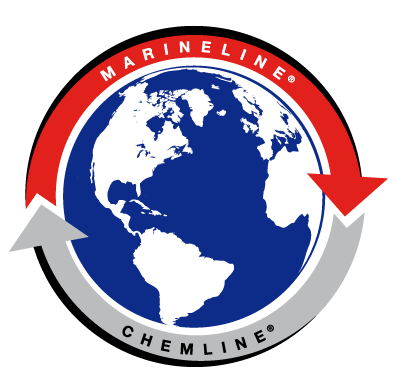In the protective coatings industry, especially within sectors such as railcar, tank, and infrastructure maintenance, the balance between long-term performance and field applicability remains a central challenge. For decades, the industry has relied on layered multi-coat systems, each layer optimized for a specific function, such as adhesion, chemical resistance, or UV stability. While technically effective, this architecture often proves inefficient in practice, introducing complexity during application and increasing the potential for inter-coat adhesion issues, cure incompatibilities, and long-term failure under real-world environmental conditions.
Recognizing these limitations, Advanced Polymer Coatings developed TriFLEX™, a direct-to-metal (DTM), single-coat protective system underpinned by a multi-resin formulation strategy. Rather than relying on stratified performance through multiple coats, TriFLEX™ integrates three distinct resin chemistries into a singular, unified matrix. This approach delivers a balanced property profile that addresses critical failure modes such as UV degradation, impact and abrasion damage, chemical attack, and cure-related defects, all within a single applied layer.
This article examines the technical foundation of TriFLEX™'s performance through a detailed exploration of the resin chemistry, crosslinking interactions, and field-driven formulation strategy that distinguishes this system in the industrial coatings market.
The Limits of Conventional Systems
Most protective coatings are built around primary resin types, including epoxies for barrier protection, polyurethanes for weatherability, and polyureas for rapid cure and mechanical toughness. While each of these chemistries offers distinct advantages, they also carry intrinsic trade-offs. Epoxies are prone to UV degradation. Aliphatic urethanes provide superior color retention but can be application-sensitive. Fast-cure polyaspartics tend to suffer from moisture-related cure defects if improperly controlled. When these resins are isolated, the formulator must select one performance priority, which often comes at the cost of others. In response, many coating systems layer these functionalities through multi-coat designs: for example, a zinc-rich primer, an epoxy intermediate, and an aliphatic polyurethane topcoat.
While effective in ideal scenarios, such systems introduce risk and inefficiency in environments with limited time windows, constrained access, or variable humidity and temperature conditions. The complexity also increases inspection requirements and magnifies the cost of rework if inter-coat failures occur.
TriFLEX™ represents a fundamentally different approach. Combining three resin systems into a single, co-reactive film eliminates the need for separate performance layers, leveraging molecular-level integration to achieve a synergistic performance profile.
TriFLEX™ Resin Architecture: A Unified Matrix of Three Functional Chemistries
The TriFLEX™ system incorporates a blend of:
1. A proprietary cyclic polyolefin-based polymer,
2. A cycloaliphatic polyurethane and
3. An aliphatic polyaspartic resin.
Each component contributes a targeted property domain, and the whole system is designed to undergo a balanced, co-curing process that results in a dense, highly crosslinked polymer network with optimized morphology and phase compatibility.
-1.png?width=3169&height=967&name=TECHNOLOGY%20for%20Edit%20(1)-1.png)
1. Proprietary Polymer: Engineered Barrier Functionality
The base of the TriFLEX™ system is a proprietary polymer derived from cyclic polyolefin monomers. Through controlled crosslinking mechanisms, this resin produces a dense, chemically inert network characterized by low water vapor transmission rates and high resistance to underfilm corrosion. Its molecular rigidity also enables excellent mechanical performance under dynamic stresses, such as vibration, flexure, and thermal cycling, which are encountered every day in mobile assets like railcars and transport tanks.
In application, this polymer forms the principal barrier against moisture ingress and chemical permeation, functioning analogously to a high-performance epoxy but with superior flexibility and impact resistance. Unlike traditional barrier coatings that may embrittle over time, this base resin maintains its integrity in the presence of flexural or mechanical loads.
2. Cycloaliphatic Polyurethane: Ultraviolet and Aesthetic Durability
UV degradation is one of the leading causes of coating failure in exterior applications. To combat this, TriFLEX™ incorporates a cycloaliphatic polyurethane derived from sterically hindered aliphatic isocyanates and UV-stable polyols. The molecular architecture includes methyl shielding chemically vulnerable bonds, which enhances weatherability by reducing susceptibility to photolytic and oxidative attack.
This polyurethane fraction contributes not only to gloss and color retention but also to thermal stability and resistance to chemical erosion in aggressive service environments. Unlike aromatic urethanes, which degrade rapidly when exposed to sunlight, the aliphatic nature of this resin ensures long-term aesthetic and mechanical performance even in high-UV regions.
From a formulation standpoint, this component integrates seamlessly with the other resins, creating a uniform film without phase separation, which oftentimes presents as a common issue when blending resins of differing polarity or cure kinetics.
3. Aliphatic Polyaspartic Resin: Cure Kinetics and Application Flexibility
The third resin component is an aliphatic polyaspartic, formed via a reaction between a polyaspartic ester and an aliphatic isocyanate. Known for their rapid cure profiles and environmental tolerance, polyaspartic coatings are increasingly favored in time-constrained industrial applications. In the TriFLEX™ system, this resin controls pot life, film build, and cure rate, which allows the coating to be applied in a variety of environmental conditions with minimal risk of poor coalescence or surface defects.
This fast-reacting chemistry reduces the total project timeline and enables same-day return to service in many applications. Moreover, it broadens the acceptable application window, which supports high-humidity and low-temperature spray environments without compromising film performance.

Figure 1: Comparison of conventional multi-layer coating systems with a single-coat triple resin formulation. The illustration demonstrates how three distinct resin chemistries, each contributing specific functional properties, are integrated into a unified, co-curing film. This configuration retains the performance benefits of traditional layered systems while simplifying application.
Crosslinked Synergy: More Than the Sum of Its Parts
What sets TriFLEX™ apart from other hybrid systems is not just the selection of resins but also their integration. The formulation is engineered for simultaneous co-curing, meaning that all three resin systems undergo chemical reactions within the same timeframe, thereby minimizing differential shrinkage and microphase separation. This co-curing architecture results in:
- High crosslink density, improving barrier and chemical resistance
- Uniform modulus distribution, enhancing mechanical toughness
- Stable gloss and color retention, even under combined UV and chemical exposure
- Moisture-tolerant curing, critical for shop-floor or field application environments
The resultant film exhibits both high hardness and elongation, an uncommon but highly desirable duality in protective coatings.
Field-Relevant Benefits and Applications
TriFLEX™ has been successfully specified for high-demand applications that require exposure to sunlight, chemical splashes, mechanical abuse, and time-sensitive installation schedules. Notable end users include:
Railcar exteriors, where high gloss and color stability are essential for visual inspection and branding, and the coating must withstand vibration, impact, and chemical service.
Tank trailers and structural steel, where reduced film system complexity translates into faster throughput and fewer failure points.
DTM refurbishments, where legacy surface preparation limits the viability of multi-layer systems, and adhesion under variable conditions is critical.



Across all these applications, the combination of chemical, mechanical, and aesthetic performance offered by TriFLEX™ reduces the total cost of ownership by minimizing recoating frequency, repair intervals, and downtime due to cure defects or aesthetic degradation.
Conclusion
The TriFLEX™ coating system represents a noteworthy advancement in the formulation of high-performance protective coatings. By integrating a cyclic polyolefin base polymer, a cycloaliphatic polyurethane, and an aliphatic polyaspartic resin into a single co-reactive matrix, the system addresses longstanding trade-offs between chemical resistance, mechanical durability, UV stability, and application practicality.
This three-resin integration eliminates the need for multiple layers by consolidating core performance attributes into a single coat, ultimately reducing complexity without sacrificing protection. Its co-cured architecture offers enhanced crosslink density, consistent film morphology, and improved environmental tolerance during application, making it particularly well-suited for transportation and heavy industrial environments where both performance and speed are non-negotiable.
As the industry continues to seek solutions that streamline operations without compromising technical integrity, systems like TriFLEX™ present a compelling alternative to traditional epoxy-urethane archetypes.
In a forthcoming technical paper, a detailed series of comparative analyses will be presented, evaluating the TriFLEX™ system alongside conventional epoxy, polyurethane, and polyaspartic coating technologies. This study will include controlled ASTM performance testing across various parameters, including corrosion resistance (ISO 12944-6), impact resistance (ASTM D5420), gloss and color retention (QUV Testing), flexibility (ASTM D522), and adhesion testing (Holdtight 102). These results will provide a quantifiable benchmark for assessing the material advantages and field applicability of this triple-resin coating system within standardized conditions.
For further technical data or comparative testing protocols, contact Advanced Polymer Coatings' technical services department.




